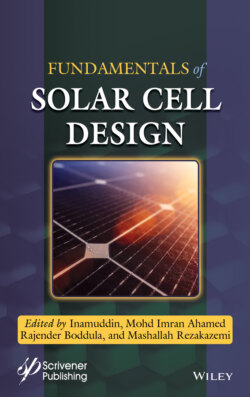Читать книгу Fundamentals of Solar Cell Design - Rajender Boddula - Страница 44
2.4.6 Plasmonic Quantum Dot (QD) Solar Cells
ОглавлениеThe plasmonic quantum dot solar cells use less material and hence they can offer more cheap solar energy conversion. There is an optimum coupling between electron excitations and plasmons under illumination of light to get best possible performance of PV device that depends on geometry and device design [81]. The high internal quantum efficiency about close to 100% has been achieved in CdSe quantum dot based photodetectorss but an are capable of reaching very high internal quantum efficiencies of close to 100%, but they have external quantum efficiency about only 1% [83]. Lin et al. have demonstrated GaAs PV cell with colloidal CdS quantum dot and achieved efficiency of 18.9% [82]. The plasmonic solar cell made up of PdS QD and Ag nanocubes has enhanced conversion efficiency from 4.45% to 6.03%. The efficiency of 8.09% was achieved with Au plasmonic Au NPs under light with broader wavelengths [84–86]. More studies and efforts are required to make this technology viable at commercial applications.
